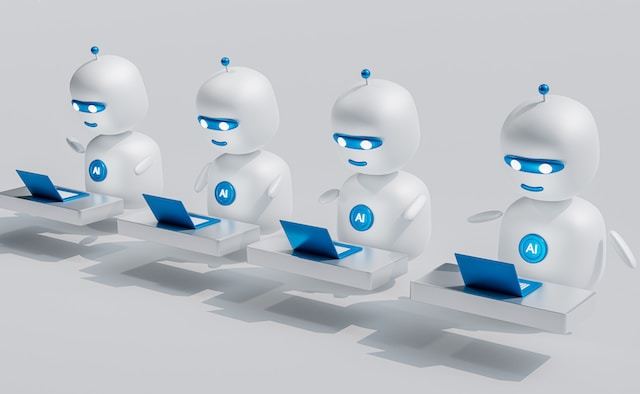In an era where technological advancements are reshaping the landscape of every industry, Generative AI stands out as a groundbreaking innovation. This article provides a comprehensive roadmap for organizations and individuals adopting Generative AI. We'll delve into key strategies, breaking down complex concepts into simple, actionable steps, ensuring the journey toward AI adoption is smooth and successful.
Understanding Generative AI: The Foundation
Before diving into the adoption process, it's crucial to grasp what Generative AI is and its potential impact. Generative AI refers to algorithms that can generate new content, ranging from text and images to music and code, based on the data they've been trained on. This technology is not just about automation; it's about creating something new that didn't exist before.
Think of it as a skilled artist who learns from various art pieces and then creates a unique artwork. Similarly, Generative AI absorbs vast amounts of data, learns patterns and styles, and produces something original. Its applications are diverse, spanning numerous sectors, including marketing, entertainment, education, and more.
Assessing Your Needs: The Starting Point
The journey begins with a clear understanding of your needs. Why do you need Generative AI? What problems are you trying to solve? This step involves a thorough analysis of your organization's goals, challenges, and potential areas where AI can make a significant impact.
For example, a marketing firm might want to use AI for creating personalized content at scale, while an educational institute might look towards AI for developing customized learning materials. Understanding these needs will not only help in choosing the right AI tools but also in setting clear objectives for the AI adoption process.

Image taken from Unsplash
Building the Right Team: Human-AI Collaboration
Generative AI doesn't operate in isolation; it requires human expertise to guide and refine its outputs. Building a team skilled in AI, data science, and domain-specific knowledge is essential. This team will be responsible for training the AI, interpreting its outputs, and integrating them into your existing workflows.
It’s like having a group of conductors, each expert in their own instrument, working together to create a symphony. The AI is the orchestra, capable of producing a range of outputs, but it's the human team that ensures the final output is harmonious and aligns with your organization's objectives.
Selecting the Right Tools: The Toolbox
With a plethora of AI tools available, selecting the right one can be daunting. The key is to look for tools that align with your needs assessment. Consider factors like ease of use, scalability, support, and integration capabilities. Whether it's an AI platform for content creation, data analysis, or customer interaction, the tool should enhance your workflow, not complicate it.
It's similar to a chef choosing the right ingredients for a recipe. The quality and suitability of the ingredients (AI tools) will determine the success of the dish (AI implementation).
Data: The Fuel for AI
Data is the lifeblood of Generative AI. The quality and quantity of data you feed into the AI will directly impact its performance. This step involves gathering relevant, high-quality data and preparing it for AI training. It's important to ensure that the data is diverse, unbiased, and representative of the scenarios where the AI will be applied.
Imagine training a pilot; you would expose them to various flight conditions to ensure they can handle real-world scenarios. Similarly, your AI needs to be trained on a diverse data set to perform effectively in real-world applications.
Training and Testing: The Fine-Tuning Process
Training the AI involves feeding it your prepared data and allowing it to learn and adapt. This phase is iterative, involving continuous testing and refinement. Regularly testing the AI's outputs against your objectives and making necessary adjustments is crucial. This process ensures that the AI not only understands the data but can also generate outputs that are accurate, relevant, and valuable.
Consider this as sculpting a masterpiece. The initial shape might be rough, but with careful chiseling (training and testing), the final sculpture (AI output) emerges as intended.
Integration and Deployment: Bringing AI to Life
Once the AI is trained and tested, the next step is integration and deployment. This involves embedding the AI into your existing systems and workflows. It's important to ensure a seamless integration where the AI complements and enhances your processes rather than disrupting them.
Think of it as introducing a new instrument into an orchestra. The integration should be smooth, adding value to the overall performance without overshadowing the existing instruments.
Monitoring and Evolving: The Continuous Journey
The final step is ongoing monitoring and evolution. AI is not a set-it-and-forget-it solution; it requires continuous oversight and adaptation. Monitoring its performance, gathering feedback, and making necessary adjustments are essential for long-term success.
This is akin to gardening; planting the seeds (AI deployment) is just the beginning. Regular care, pruning, and adaptation to changing conditions are necessary for the garden (AI implementation) to thrive.
Conclusion
Adopting Generative AI is a journey of understanding, preparation, collaboration, and continuous evolution. By following this roadmap, organizations can harness the transformative power of AI, driving innovation and efficiency across various sectors. Remember, the key to successful AI adoption lies in the synergy between human and artificial intelligence.
